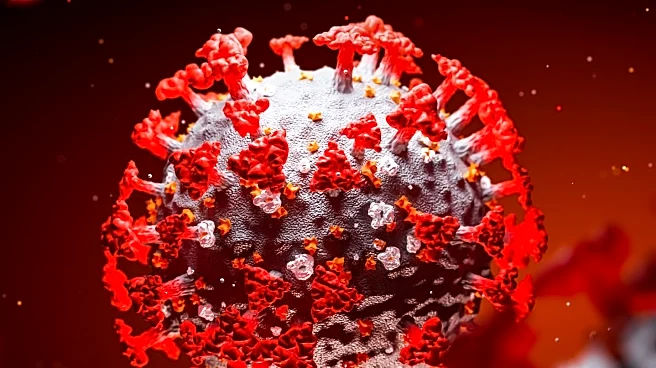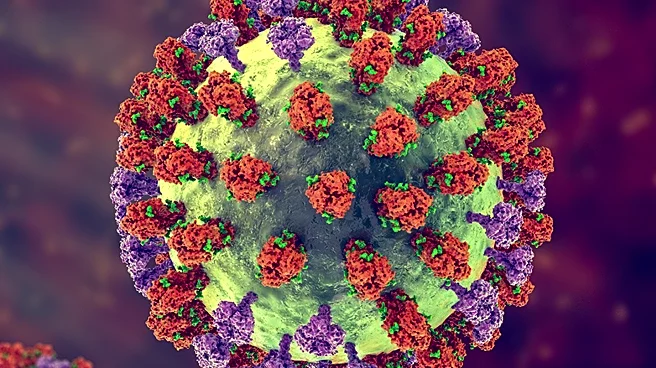What's Happening?
NanoViricides, Inc. is progressing with its dual-track clinical development strategy for its broad-spectrum antiviral drug candidate, NV-387. The company aims to address unmet medical needs for effective
antiviral therapies targeting MPox and various respiratory viral infections, including influenzas, coronaviruses, and RSV. NV-387 has completed Phase 1 trials, demonstrating safety and tolerability. The next steps involve Phase 2 trials for MPox in Congo, with potential funding from the US biodefense agency, BARDA. Concurrently, NanoViricides plans adaptive basket-type trials in India to assess NV-387's efficacy against respiratory viruses, potentially leading to focused US trials by 2027.
Why It's Important?
The development of NV-387 is significant as it targets a broad range of viral infections, addressing critical public health challenges. The potential funding from BARDA underscores the importance of biodefense applications, particularly for MPox. Successful trials could lead to substantial market opportunities, with estimates suggesting a $2.6 billion opportunity in RSV and $4.6 billion in influenza. This advancement could enhance the U.S. pharmaceutical landscape by providing new antiviral options, potentially reducing the burden of viral diseases and improving public health outcomes.
What's Next?
NanoViricides is preparing for Phase 2 trials in Congo for MPox, with ethics approval already obtained. The company is also planning trials in India for respiratory viral diseases, which could start in winter 2026. These trials aim to gather efficacy data, potentially leading to focused U.S. trials by 2027. The success of these trials could attract further investment and collaboration, accelerating the development and commercialization of NV-387.
Beyond the Headlines
The development of NV-387 highlights the innovative use of nanotechnology in antiviral therapies. NanoViricides' approach involves nano-polymer micelle technology that directly targets and destroys virus particles, offering a novel mechanism of action. This could pave the way for future advancements in nanomedicine, potentially transforming the treatment landscape for viral infections and influencing regulatory and ethical considerations in drug development.












